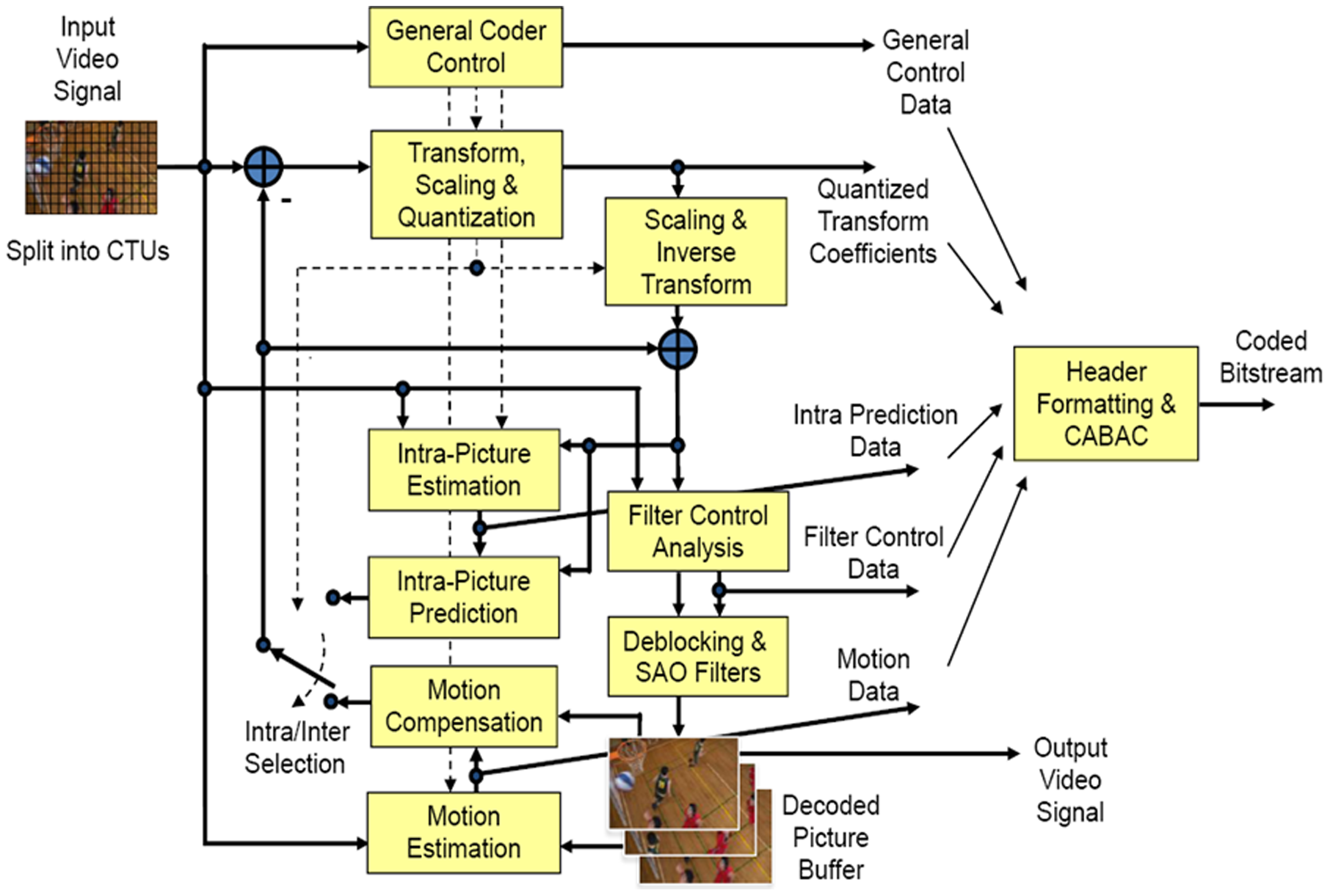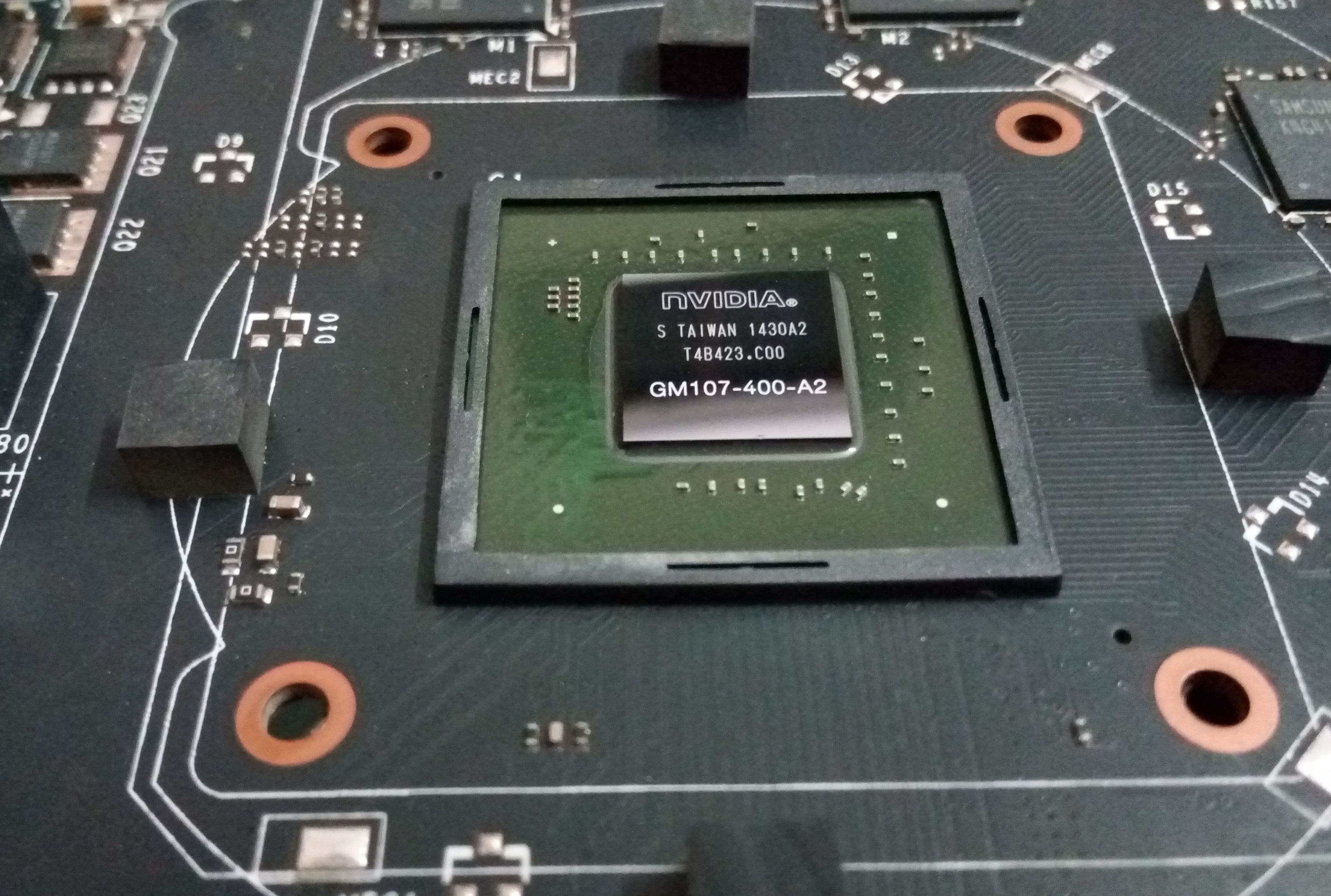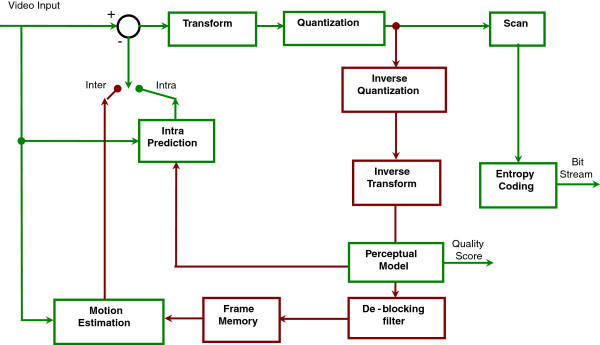|
Nvidia NVENC
Nvidia NVENC (short for Nvidia Encoder) is a feature in Nvidia graphics cards that performs video encoding, offloading this compute-intensive task from the CPU to a dedicated part of the GPU. It was introduced with the Kepler-based GeForce 600 series in March 2012. The encoder is supported in many livestreaming and recording programs, such as vMix, Wirecast, Open Broadcaster Software (OBS) and Bandicam, as well as video editing apps, such as Adobe Premiere Pro or DaVinci Resolve. It also works with Share game capture, which is included in Nvidia's GeForce Experience software. Consumer targeted GeForce graphics cards officially support no more than 3 simultaneously encoding video streams, regardless of the count of the cards installed, but this restriction can be circumvented on Linux and Windows systems by applying an unofficial patch to the drivers. Doing so also unlocks ''NVIDIA Frame Buffer Capture (NVFBC)'', a fast desktop capture API that uses the capabilities of the GP ... [...More Info...] [...Related Items...] OR: [Wikipedia] [Google] [Baidu] |
Nvidia
Nvidia CorporationOfficially written as NVIDIA and stylized in its logo as VIDIA with the lowercase "n" the same height as the uppercase "VIDIA"; formerly stylized as VIDIA with a large italicized lowercase "n" on products from the mid 1990s to early-mid 2000s. Though unofficial, second letter capitalization of NVIDIA, i.e. nVidia, may be found within enthusiast communities and publications. ( ) is an American multinational technology company incorporated in Delaware and based in Santa Clara, California. It is a software and fabless company which designs graphics processing units (GPUs), application programming interface (APIs) for data science and high-performance computing as well as system on a chip units (SoCs) for the mobile computing and automotive market. Nvidia is a global leader in artificial intelligence hardware and software. Its professional line of GPUs are used in workstations for applications in such fields as architecture, engineering and construction, media ... [...More Info...] [...Related Items...] OR: [Wikipedia] [Google] [Baidu] |
Unofficial Patch
An unofficial patch is a patch for a piece of software, created by a third party such as a user community without the involvement of the original developer. Similar to an ordinary patch, it alleviates bugs or shortcomings. Unofficial patches do not usually change the intended usage of the software, in contrast to other third-party software adaptions such as mods or cracks. Motivation A common motivation for the creation of unofficial patches is missing technical support by the original software developer or provider. Reasons may include: *the software product reached its defined end-of-life and/or was superseded by a successor product (planned obsolescence) * the software was originally designed to operate in a substantially different environment and may require improvement/optimization (porting) * the developer has gone out of business and is not available anymore (abandonware) *support is not economically viable (e.g. localization for small markets) *a fast solution for a t ... [...More Info...] [...Related Items...] OR: [Wikipedia] [Google] [Baidu] |
Nvidia Quadro
Quadro was Nvidia's brand for graphics cards intended for use in workstations running professional computer-aided design (CAD), computer-generated imagery (CGI), digital content creation (DCC) applications, scientific calculations and machine learning. Differences between the professional Quadro and mainstream GeForce lines include the use of ECC memory and enhanced floating point precision. These are desirable properties when the cards are used for calculations which, in contrast to graphics rendering, require reliability and precision. The Nvidia Quadro product line directly competed with AMD's Radeon Pro (formerly FirePro/FireGL) line of professional workstation cards. Nvidia has moved away from the Quadro branding for new products, starting with the launch of the Ampere architecture-based RTX A6000 on October 5, 2020. To indicate the upgrade to the Nvidia Ampere architecture for their graphics cards technology, Nvidia RTX is the product line being produced and developed m ... [...More Info...] [...Related Items...] OR: [Wikipedia] [Google] [Baidu] |
HEVC
High Efficiency Video Coding (HEVC), also known as H.265 and MPEG-H Part 2, is a video compression standard designed as part of the MPEG-H project as a successor to the widely used Advanced Video Coding (AVC, H.264, or MPEG-4 Part 10). In comparison to AVC, HEVC offers from 25% to 50% better data compression at the same level of video quality, or substantially improved video quality at the same bit rate. It supports resolutions up to 8192×4320, including 8K UHD, and unlike the primarily 8-bit AVC, HEVC's higher fidelity Main 10 profile has been incorporated into nearly all supporting hardware. While AVC uses the integer discrete cosine transform (DCT) with 4×4 and 8×8 block sizes, HEVC uses integer DCT and DST transforms with varied block sizes between 4×4 and 32×32. The High Efficiency Image Format (HEIF) is based on HEVC. , HEVC is used by 43% of video developers, and is the second most widely used video coding format after AVC. Concept In most ways, HEVC is an extensio ... [...More Info...] [...Related Items...] OR: [Wikipedia] [Google] [Baidu] |
Coding Tree Unit
Coding tree unit (CTU) is the basic processing unit of the High Efficiency Video Coding (HEVC) video standard and conceptually corresponds in structure to macroblock units that were used in several previous video standards. CTU is also referred to as largest coding unit (LCU). A CTU can be between 16×16 pixels and 64×64 pixels in size with a larger size usually increasing coding efficiency. The first video standard that uses CTUs is HEVC/H.265 which became an ITU-T standard on April 13, 2013. History Macroblock encoding methods have been used in digital video coding standards since H.261 which was first released in 1988. However, for error correction and signal-to-noise ratio the standard 16x16 macroblock size is not capable of getting the kind of bit reductions that information theory and coding theory suggest are theoretically and practically possible. Technical details HEVC replaces macroblocks, which were used with previous video standards, with CTUs which can use larger bl ... [...More Info...] [...Related Items...] OR: [Wikipedia] [Google] [Baidu] |
Video Compression Picture Types
In the field of video compression a video frame is compressed using different algorithms with different advantages and disadvantages, centered mainly around amount of data compression. These different algorithms for video frames are called picture types or frame types. The three major picture types used in the different video algorithms are I, P and B. They are different in the following characteristics: * I‑frames are the least compressible but don't require other video frames to decode. * P‑frames can use data from previous frames to decompress and are more compressible than I‑frames. * B‑frames can use both previous and forward frames for data reference to get the highest amount of data compression. Summary Three types of ''pictures'' (or frames) are used in video compression: I, P, and B frames. An I‑frame ( Intra-coded picture) is a complete image, like a JPG or BMP image file. A P‑frame (Predicted picture) holds only the changes in the image from the p ... [...More Info...] [...Related Items...] OR: [Wikipedia] [Google] [Baidu] |
Maxwell (microarchitecture)
Maxwell is the codename for a GPU microarchitecture developed by Nvidia as the successor to the Kepler microarchitecture. The Maxwell architecture was introduced in later models of the GeForce 700 series and is also used in the GeForce 800M series, GeForce 900 series, and Quadro Mxxx series, as well as some Jetson products, all manufactured with TSMC's 28 nm process. The first Maxwell-based products were the GeForce GTX 745 (OEM), GeForce GTX 750, and the GeForce GTX 750 Ti. Both were released on February 18, 2014, both with the chip code number GM107. Earlier GeForce 700 series GPUs had used Kepler chips with the code numbers GK1xx. First-generation Maxwell GPUs (code numbers GM10x) are also used in the GeForce 800M series and the Quadro Kxxx series. A second generation of Maxwell-based products was introduced on September 18, 2014 with the GeForce GTX 970 and GeForce GTX 980, followed by the GeForce GTX 960 on January 22, 2015, the GeForce GTX Titan X on March 17, 2015, and th ... [...More Info...] [...Related Items...] OR: [Wikipedia] [Google] [Baidu] |
Compression Artifact
A compression artifact (or artefact) is a noticeable distortion of media (including images, audio, and video) caused by the application of lossy compression. Lossy data compression involves discarding some of the media's data so that it becomes small enough to be stored within the desired disk space or transmitted (''streamed'') within the available bandwidth (known as the data rate or bit rate). If the compressor cannot store enough data in the compressed version, the result is a loss of quality, or introduction of artifacts. The compression algorithm may not be intelligent enough to discriminate between distortions of little subjective importance and those objectionable to the user. The most common digital compression artifacts are DCT blocks, caused by the discrete cosine transform (DCT) compression algorithm used in many digital media standards, such as JPEG, MP3, and MPEG video file formats. These compression artifacts appear when heavy compression is applied, and o ... [...More Info...] [...Related Items...] OR: [Wikipedia] [Google] [Baidu] |
Video Coding Engine
Video Code Engine (VCE, was earlier referred to as Video Coding Engine, Video Compression Engine or Video Codec Engine in official AMD documentation) is AMD's video encoding application-specific integrated circuit implementing the video codec H.264/MPEG-4 AVC. Since 2012 it was integrated into all of their GPUs and APUs except Oland. VCE was introduced with the Radeon HD 7000 Series on 22 December 2011. VCE occupies a considerable amount of the die surface at the time of its introduction and is not to be confused with AMD's Unified Video Decoder (UVD). As of AMD Raven Ridge (released January 2018), UVD and VCE were succeeded by Video Core Next (VCN). Overview The handling of video data involves computation of data compression algorithms and possibly of video processing algorithms. As the template compression methods shows, lossy video compression algorithms involve the steps: motion estimation (ME), discrete cosine transform (DCT), and entropy encoding (EC). AMD Video Cod ... [...More Info...] [...Related Items...] OR: [Wikipedia] [Google] [Baidu] |
AOMedia Video 1
AOMedia Video 1 (AV1) is an open, royalty-free video coding format initially designed for video transmissions over the Internet. It was developed as a successor to VP9 by the Alliance for Open Media (AOMedia), a consortium founded in 2015 that includes semiconductor firms, video on demand providers, video content producers, software development companies and web browser vendors. The AV1 bitstream specification includes a reference video codec. In 2018, Facebook conducted testing that approximated real-world conditions, and the AV1 reference encoder achieved 34%, 46.2% and 50.3% higher data compression than libvpx-vp9, x264 High profile, and x264 Main profile respectively. Like VP9, but unlike H.264/AVC and HEVC, AV1 has a royalty-free licensing model that does not hinder adoption in open-source projects. AVIF is an image file format that uses AV1 compression algorithms. History The Alliance's motivations for creating AV1 included the high cost and uncertainty involved ... [...More Info...] [...Related Items...] OR: [Wikipedia] [Google] [Baidu] |
High Efficiency Video Coding
High Efficiency Video Coding (HEVC), also known as H.265 and MPEG-H Part 2, is a video compression standard designed as part of the MPEG-H project as a successor to the widely used Advanced Video Coding (AVC, H.264, or MPEG-4 Part 10). In comparison to AVC, HEVC offers from 25% to 50% better data compression at the same level of video quality, or substantially improved video quality at the same bit rate. It supports resolutions up to 8192×4320, including 8K UHD, and unlike the primarily 8-bit AVC, HEVC's higher fidelity Main 10 profile has been incorporated into nearly all supporting hardware. While AVC uses the integer discrete cosine transform (DCT) with 4×4 and 8×8 block sizes, HEVC uses integer DCT and DST transforms with varied block sizes between 4×4 and 32×32. The High Efficiency Image Format (HEIF) is based on HEVC. , HEVC is used by 43% of video developers, and is the second most widely used video coding format after AVC. Concept In most ways, HEVC is an extensi ... [...More Info...] [...Related Items...] OR: [Wikipedia] [Google] [Baidu] |
Advanced Video Coding
Advanced Video Coding (AVC), also referred to as H.264 or MPEG-4 Part 10, is a video compression standard based on block-oriented, motion-compensated coding. It is by far the most commonly used format for the recording, compression, and distribution of video content, used by 91% of video industry developers . It supports resolutions up to and including 8K UHD. The intent of the H.264/AVC project was to create a standard capable of providing good video quality at substantially lower bit rates than previous standards (i.e., half or less the bit rate of MPEG-2, H.263, or MPEG-4 Part 2), without increasing the complexity of design so much that it would be impractical or excessively expensive to implement. This was achieved with features such as a reduced-complexity integer discrete cosine transform (integer DCT), variable block-size segmentation, and multi-picture inter-picture prediction. An additional goal was to provide enough flexibility to allow the standard to be applied ... [...More Info...] [...Related Items...] OR: [Wikipedia] [Google] [Baidu] |





